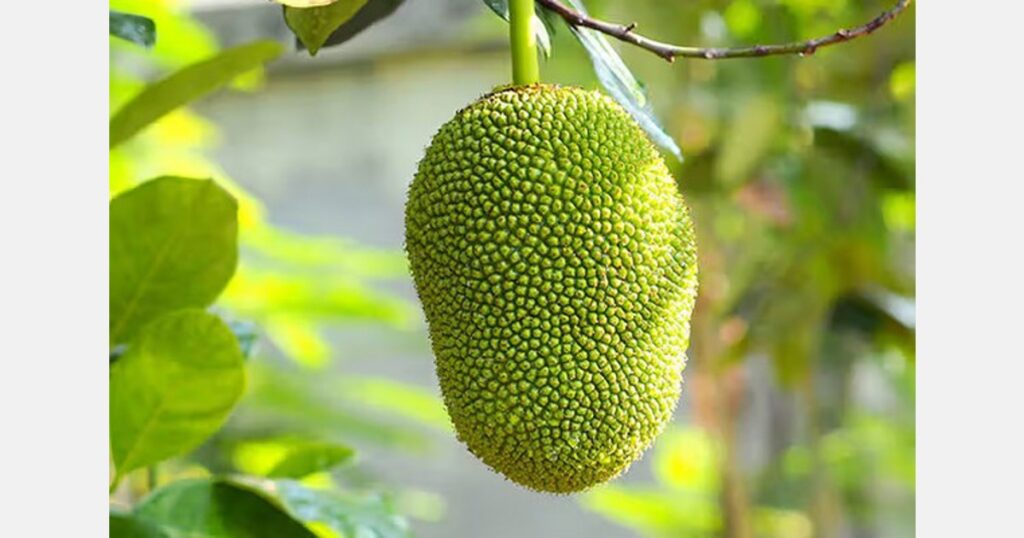Mature jackfruit trees can produce around 200 fruits annually, with older trees yielding up to 500 fruits each year.
In the heart of Sindh, a new agricultural revolution is taking root with the cultivation of jackfruit (kathal), a nutritious crop that promises significant economic benefits for farmers and landowners alike.
This versatile and substantial fruit, originally from India and celebrated as the national fruit of Bangladesh, is also found in the Philippines, Thailand, and Sri Lanka.
Jackfruit is now being cultivated in the Sindh areas of Tando Jam and Tando Allahyar, transforming the agricultural landscape and providing a sustainable, profitable venture.
The hefty jackfruit, with its yellowish-brown exterior composed of hexagonal apices, is a treasure trove of nutrients. Rich in calcium, potassium, fiber, vitamins A and C, and proteins, it offers a wholesome dietary addition.
A mature jackfruit tree can produce around 200 fruits per year, while older trees can yield up to 500 fruits annually. This abundant output makes jackfruit a highly profitable crop.
Farmer Taufeeq Qaimkhani reports that a single tree on his land generates an income of more than Rs100,000.
Experts indicate that the favorable climate of interior Sindh is particularly suitable for jackfruit production. Jackfruit trees require very little water, making them ideal for regions facing water scarcity.
A horticulturist mentions that the weight of this fruit can reach up to 22 kilograms.
